HT Editors Pick Their Most Interesting Reads of 2018
Trump, spymasters, the dark side of technology, and novels with big themes featured on the HT Editors’ eclectic collective reading list this year
ANUP GUPTA, MANAGING EDITOR, INTEGRATION
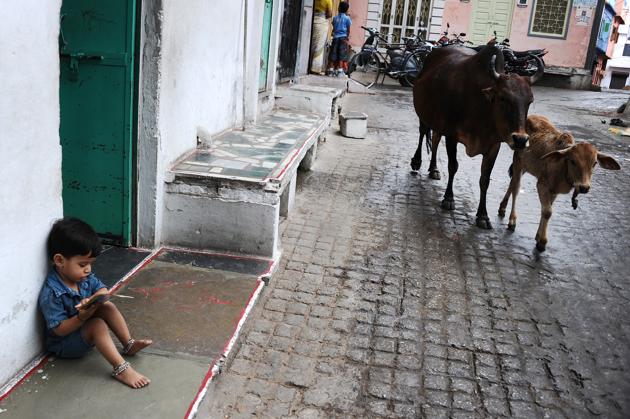
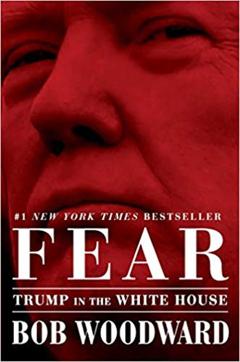
Given Bob Woodward’s reputation, it was no surprise that his Fear - Trump in the White House generated the interest that it did. The book took me by surprise; it was racy and read like a thriller. It gave an insight into the way important decisions, that impact economies and politics around the world, are taken. It was shocking to read that the first citizen of the most powerful country in the world, The President of the United States, Donald Trump suffers from alarming mood swings and is unable to handle criticism or pressure. Trump’s attitude towards his team, as the can glean from the conversations in the book, is abrasive and disrespectful. The book records how he reprimands his senior staffers in public. The book also records that Trump has an insufficient understanding of the implications of his decisions on the global economy, and at times, he was influenced by son-in-law Jared Kushner.
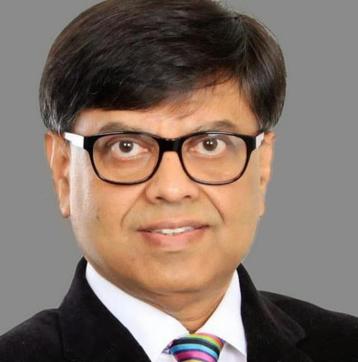
That said, it must also be mentioned that Donald Trump is implementing the promises he made during his campaign, the promises that got him into the White House. What needs to be seen, and it has been dealt with in any detail, is how, and if at all, Robert Mueller will be able to find anything substantial against POTUS.
It is not clear if Donald Trump will last his term or if he will run again in 2020. What is amply evident is that all is not well in the White House, and that the world is in for a rough ride. This book revealed a lot. It is a great read.
HARINDER BAWEJA, EDITOR, SPECIAL PROJECTS
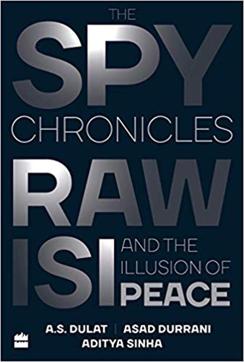
Book shelves in Delhi and Islamabad are lined with volumes on the problematic relations between India and Pakistan, but The Spy Chronicles: RAW, ISI and the Illusion of Peace is like few that have previously tried to decipher the ‘deewangee’ (madness) between the two neighbours.
The book is unique, for it brings together heads of each other’s intelligence agencies. It must be the first time that chiefs of rival spy agencies in the subcontinent have sat together to spill some (repeat, some) secrets about their craft, which essentially demands that each attempts to outsmart the other.
Former Research and Analysis Wing chief AS Dulat, and Lt Gen Asad Durrani, a former head of the Inter-Services Intelligence collaborated to put their names on the same book and discuss thorny issues like Kashmir, Afghanistan and the capture and killing of Osama bin Laden.

In a stunning disclosure, Durrani admits that his biggest failure as ISI chief was when the insurgency took root in the Kashmir Valley in 1990. “The biggest failure was that when the Kashmir uprising happened, we did not know how far it would go. These things usually run their course in six months or a year. When it became lasting, we wondered how to keep a handle on it. We didn’t want it to go out of control, which could lead to a war that neither side wanted. Could we micro-manage it? That was our challenge. ISI’s leverage on the Kashmir insurgency turned out less than successful.”
Durrani may have once been the head of the all-powerful Pakistani establishment but his current colleagues, blessed with thin skins when it comes to India, immediately summoned him, asked him for an explanation and put him on the exit control list, as if he were some criminal who’d escape.
The treatment of Durrani itself gives an insight into the mind of the Generals who ‘run’ Pakistan.
The book is racy and its format is unique. It is not a book that has been co-authored. Conversations between the two spy masters – whose job it is to conspire against each other – have been moderated by journalist and author Aditya Sinha. There is a lot of masala and perspective for those interested in espionage and then, these are spy chronicles out of India and Pakistan.
KUNAL PRADHAN, EXECUTIVE EDITOR

There are philosophers, thinkers, proclaimers of grand declarations, and makers of important points. There are combinations of some, and sometimes all, of the above. But over the last five years, Yuval Noah Harari, a world history professor at the Hebrew University of Jerusalem, has started to occupy a strange space among logicians. He is all of the above, of course, but in a slightly different way – instead of making points or grand declarations, he seems to nudge you in their direction and then lets you find them yourself. He doesn’t always finish the argument, he allows you to discover it, sometimes alter, to best understand our life and times, what got us here, and where we are headed.
After the seminal Sapiens: A Brief History of Humankind and the sequel Homo Deus: A Brief History of Tomorrow, Harari returned this year with a collection of essays that expanded his range, mapping technology and religion, god and science fiction, and war and meditation, on one gigantic canvas. His latest offering, 21 Lessons for the 21st Century – the title may sound like something between a self-help book and a spiritual monograph – is relevant, current, even urgent.

He gets you right in the first chapter when he breaks down the history of the modern world between three stories: the fascist story, the communist story, and the liberal story. Just before the start of World War 2, Harari says, humans were offered the three global stories to choose from. Then, in the 1940s, the fascist story was knocked out and the world was left with two stories: communist and liberalism. Then, in the 1980s and the 1990s, the communist story collapsed with the fall of the Soviet Union, and the liberal story appeared to emerge as the indispensable manual for the future. But since the global financial crisis of 2008, people started getting disillusioned with the liberal story as well. The year 2016 – with Brexit in Britian and Trump in the US – marked the time when the world, which had three stories to choose from in 1936, and two to choose from in 1966, suddenly had no global story left.
No one person can know everything about everything. So there were portions of 21 Lessons in which I vigorously agreed with Harari, and there are some arguments that I did not subscribe to. But you keep reading him no matter what, for he allows you to keep thinking, and keep drawing your own grand deductions.
LALITA PANICKER, COMMENTS EDITOR
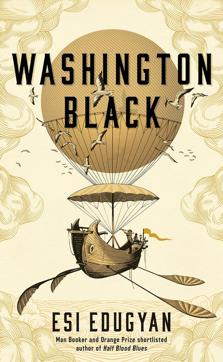
I did not read half as many books as I would have liked to this year but of those I did, my choice is, by a long shot, Esi Edugyan’s Washington Black. Before you think it is yet another colonial slavery story, this novel goes a little beyond the crushing of the human soul; it looks at the complexities that freedom brings with it for all the characters irrespective of their colour. The story focuses on Washington Black, a child slave on a sugar plantation in Barbados in the 19th century. The novel was listed for the Man Booker prize and it’s a real shame that it did not win. The most poignant words in the book come from Big Kit, a female slave who is a maternal figure to Wash for a while. When Wash asks her what it feels like to be free, Kit replies, “Oh, child, it is like nothing in this world. When you free, you can do anything.” The story of the child slave is not one of unrelenting brutality as such stories often tend to be, but of hope, of Wash gaining incremental freedoms. Two people take him to a different plane, the owner’s brother Titch Wilde and later a scientist Dr Goff.
The slowly liberating slave’s travels take him in a hot air balloon from the Barbados plantation to Nova Scotia to Morocco to London to Amsterdam. Now this may seem a little too sweeping as far as locales go, but the taut, crisp, mellifluous language holds the reader spellbound. One wishes however, that the doleful, yet unshakeable character of Kit could have featured more in the book.
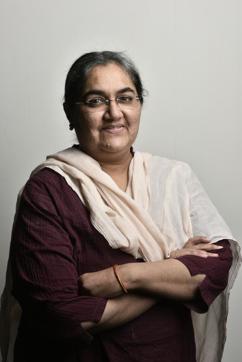
When slavery is abolished, it is freedom which is a frightening prospect for Wash, his life in bondage has left him without an identity, a nowhere person in a nowhere world. Unlike other slaves condemned to facelessness, Washington becomes a man in his own right but he still has to strive for recognition. His creative pursuits, his ability to draw, takes him to a world inhabited only by himself as a proud free man, his time his own. In his scientific achievement, we wonder, how much has the world recognised the role of blacks in science? The answers are disturbing in that much of the world considers them invisible.
The pain of enslavement is never far behind despite Wash’s achievements. He moves from freedom to a degree to empowerment. He blossoms as an artist and scientist but is always held back from his full potential. Can a person truly leave his past behind, one as bloody and bitter as the one Wash experienced? The terrible grief and passion that power his life and the times he lived in are laid out with precision in prose so elegant that it resembles poetry by Edugyan. Do read this book if you have not already. It will stay with you long after you have turned the last page.
MANJULA NARAYAN, NATIONAL BOOKS EDITOR
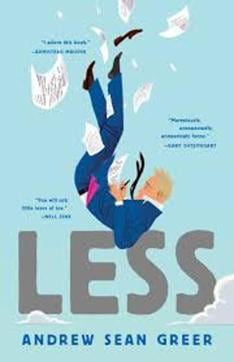
My raging and totally untreatable tsundoku means volumes pile up unread on my bed, under it, and on my work table. Occasionally, I am able to shake off my ennui and read a book to the end. Happily, I managed that quite often this year. 2018 has been a good year for non-fiction: Infinite Variety; A History of Desire in India by Madhavi Menon, which touched on everything from our national obsession with hair to Lord Ayyappan, impressed with its originality and scholarship; Aatish Taseer’s Twice Born; Life and Death on the Ganges gave the reader a greater understanding of how caste is central to identity; and Chinmay Tumbe’s India Moving showed how this nation is being reforged, hopefully for the better, by the ongoing Great Indian Migration Wave. I enjoyed Siddharth Dhanvant Shanghvi’s The Rabbit and the Squirrel, superbly illustrated by Stina Wirsen, and K Madavane’s book of short stories, To Die in Benares, filled me with equal parts of elation and dread. The death of VS Naipaul in August prompted a rereading of his first novel, The Mystic Masseur. It made me laugh out loud yet again.

And then there is Andrew Sean Greer’s Less, about a failed novelist turning 50, which made me alternately, guffaw and tear up, admire the author’s craft, and marvel at the slowly-revealed gem of knowledge at its core:
“It is, after all, almost a miracle they are here. Not because they’ve survived the booze, the hashish, the migraines. Not that at all. It’s that they’ve survived everything in life, humiliations and disappointments and heartaches and missed opportunities, bad dads and bad jobs and bad sex and bad drugs, all the trips and mistakes and face-plants of life, to have made it to fifty…”.
There are books you know you will return to many times in your life, finding new things to admire with each reading. Less is one of those. It also contains what’s currently my favourite line – Just for the record: happiness is not bullshit.
PAROMA MUKHERJEE, HEAD - NATIONAL PHOTO DESK
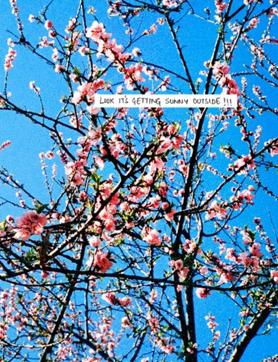
India’s youngest Associate Member at Magnum Photos, Sohrab Hura’s book, Look It’s Getting Sunny Outside!!! is an ode to delicate companionship in messy, unglamorous colour photographs. Hura’s mother was diagnosed with acute paranoid schizophrenia in 1999 and his understanding of life and things that were slipping away took form in his first book, Life is Elsewhere. Comprising dark, grainy black and white photographs that marked uncertain observations, contradictions and love, it was the perfect body of work to set the ground for Look It’s Getting Sunny Outside!!!
The second book is almost an aftermath that one imagines to be happy and sorted. Except that it’s beautifully woeful. There’s no introductory text, just a handwritten dedication to his mother, followed by an image of his dog Elsa and his mother in sweet slumber, wrapped in one large blanket, their heads on opposite sides of the bed. This is a personal family album, shaped like a book. The photographs are as innocent as those that came out of point-and-shoot film cameras back in the 1980s, and yet moving, dark and layered enough to leave one still every few pages. It becomes very evident early on that this is the story of Hura’s mother and their dog Elsa. He is simply the storyteller, but he brings back everything he sees, leaving nothing behind to hide.

Elsa was his mother’s companion for 13 years and died in the winter of 2014. This isn’t, though, a book of family photographs with their dog in Delhi’s lush parks. It steers clears of the outdoors. There’s pain, playfulness, Hura’s mother scolding Elsa, her condition deteriorating as Elsa stands by her side and an appearance by Hura’s father in the book that seems to offer some semblance of balance, as conventional society would desire it. Hura photographs Elsa’s last days beautifully, almost building up her death for us like the way he prepared himself for it. His mother’s handwritten note to him about why they got Elsa for him, and how she became his mother’s in the end completes the tale.
POONAM SAXENA, NATIONAL WEEKEND EDITOR
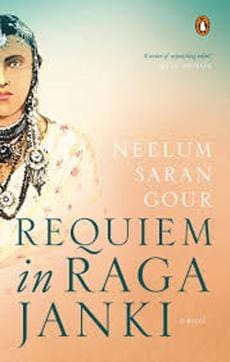
Of all the books I’ve read over the course of the year (and many have been wonderful and rewarding), there’s one I particularly want to write about: Neelum Saran Gour’s sparkling little gem, Requiem in Raga Janki. Gour is a professor of English at Allahabad University (she has written a very comprehensive history of the university, Three Rivers and a Tree, along with novels and short stories). Requiem… is the story of the great Allahabad singer Janki Bai who soared to fame in the early 20th century.
Gour recreates a glorious era of music and poetry, redolent with the scent of paan, the whisper of muslin, the clatter of horse-drawn phaetons, the golden notes of the strange new firangee instrument, the harmonium…with the striking figure of Janki Bai ‘Chhappan Chhuri’ at the heart of it. Because beneath the elegance also lurked violence and tragedy: As a young girl, Janki suffered a vicious knife attack that left her disfigured, with ‘fifty six scars.’ She was – as one chronicler put it – “nihayat badsoorat’ but her music lifted her out of obscurity and elevated her to stardom.

She learnt from an exceptional ustad at an Allahabad kotha, eventually became its patroness, sang at mehfils and weddings and festivals (even the Delhi Durbar in 1911) for maharajas, zamindars, local notables, raeeses, recorded songs for gramophone companies, fell in love, forged a friendship with the brilliant Akbar Ilahabadi (Gour gives us a delightful portrait of the eccentric poet, who was also a judge in the Allahabad High Court), faced rejection and heartbreak from loved ones, but soldiered on, always finding refuge and comfort in the beauty of her music.
The music… that’s a character of its own in the book. There are two entire chapters where Janki Bai’s ustad Hassu Khan tells her fascinating stories about great singers and maestros, about the creation and nature of ragas, and the mysteries of ascending and descending notes. Indeed, Janki’s music is like a shining silver thread that runs right through the narrative.
ROSHAN KISHORE, DATA & POLITICAL ECONOMY EDITOR
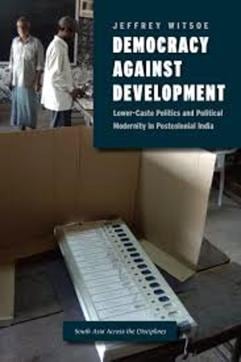
An overwhelming majority of upper caste Biharis of my age think of Lalu Prasad Yadav’s regime as dark ages for the state. Law and order and development collapsed. Somewhat similar sentiment prevails within the left-liberal crowd in the country about the period under the present government. Forces of Hindutva are out to destroy the secular-democratic order, it is argued.
These are polarising topics. Personal biases often prejudice intellectual arguments. What is even worse is the fact that lack of theory generates conspiracy theories. Lalu’s repeated election victories were attributed to rigging. Questions have been raised on efficacy of electronic voting machines after the Bharatiya Janata Party’s victories. Such arguments do not take us very far in understanding the multiple contradictions which shape outcomes in India’s democratic processes. It is necessary to realise that democracy in its crudest form, will of the majority, can often work against important goals in the short to medium term.
Jeffrey Witsoe’s book Democracy against Development: Lower Caste Politics and Political Modernity in Postcolonial India is a comprehensive study of the Lalu period in Bihar. As is clear from the title itself, it argues that even though Lalu furthered the cause of democracy by empowering socially deprived sections, governance and development took a hit.
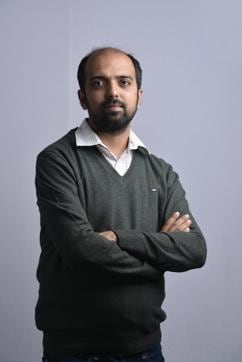
The case of the eco-system around the Rashtriya Swayamsevak Sangh (RSS) is similar in the country. There is a tendency to look at the Sangh Parivar as a static monolithic entity which should still be vulnerable criticisms about its role during the freedom movement and earlier. In The RSS: A view from the Inside Walter Andersen and Sridhar Damle tell us how the RSS has evolved and expanded over the course of time, especially in post-reform India. Most people including this author believe that at the core of the RSS value system is a regressive primacy to majoritarian religion in the matter of state, which finds articulation as Hindu Rashtra. What is also true, however, is that the political opposition to the RSS has not done enough to counter the democratic appeal of such politics in the country. Democracy in this case has turned against the republic.
Books are worth recommending when they make us question our entrenched beliefs and look for other answers to troubling questions.
SACHIN KALBAG, EXECUTIVE EDITOR
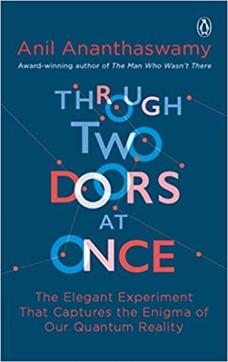
The double-slit experiment is simultaneously the most simple and the most confounding exercise in all of physics. It is elegant, yes, but the truth is that the results of the experiment are so confusing that even the greatest scientific minds of the 20th century and beyond have not been able to explain them, because, as it turns out, the experiment displays the probabilistic world of quantum mechanics. Is light a series of particles? Or is it waves? Or both? What about electrons? Are they waves, or are they particles?
Anil Ananthaswamy traces the history and the development of quantum mechanics – one of the most complex subjects known to humans – using the double-slit experiment as the book’s fundamental premise. Ananthaswamy is a renowned science writer and journalist. If someone had asked me for a favourite book of 2015, I would have picked another of his works, The Man Who Wasn’t There, an investigation into the vagaries of the human mind.
Through Two Doors at Once reminded me of another modern-day science classic I read around 1998 – Simon Singh’s brilliant work Fermat’s Last Theorem. Just like Dr Singh explored the mysteries of mathematics (and its history) using French mathematician Pierre de Fermat’s intriguing riddle to humanity that remained unsolved for close to 360 years, Ananthaswamy literally takes us on a journey of discovery. For a lover of physics and mathematics, there could not have been a better book to explain the complexities of quantum mechanics. The other remarkable book on the same subject is Quantum by Manjit Kumar, released around a decade ago.
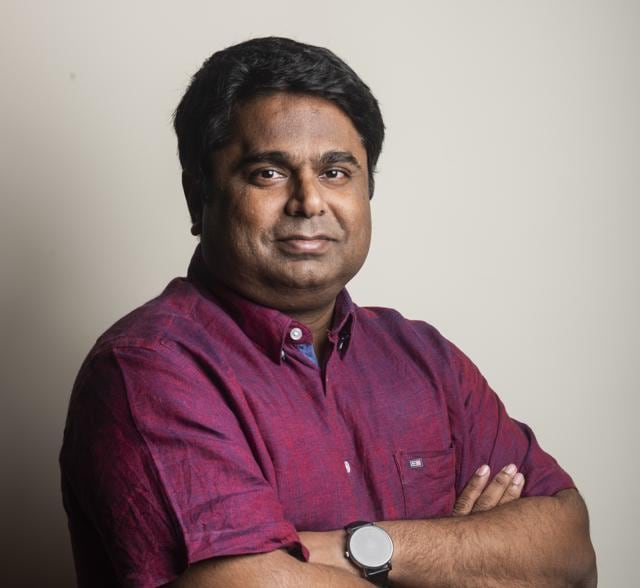
Truth be told, the best science stories are told not by explaining a theory or the complexity of its equations, but by narrating stories of people who solve the greatest riddles. Dr Singh’s story, for example, is as much about Prof Andrew Wiles, the British mathematician who finally solved Fermat’s theorem in the 1990s as it is about some of the greatest names in mathematics.
Similarly, Ananthswamy attempts to narrate the story of quantum physics by telling the stories behind it, making it one of the more noteworthy science books in recent memory.
SANCHITA SHARMA, HEALTH EDITOR
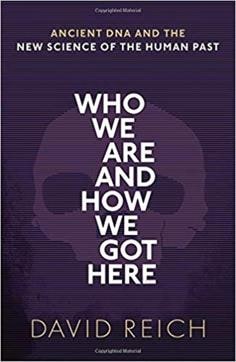
What does being Indian mean? Is race a social construct with human populations across the world having a remarkably similar genetic make-up, or are there wide differences in the genetic ancestry of humanity?
Harvard geneticist David Reich argues it’s a bit of both – that race is a social construct, but the differences in genetic ancestry are also real. In his pathbreaking and controversial book, Who We Are and How We Got Here: Ancient DNA and the New Science of the Human Past, he uses the human genome as a series of clues to decipher the history of our species and define who we are. Reich’s uses advances in DNA sequencing technology over the past two decades to trace human origins from the Neanderthals to better understand race, identity, evolution and migrations over the past 100,000 years.
“The collision that formed India”, which gets a chapter to itself, happened 2,000 to 4,000 years ago, when new migrations from central Asia in what is modern-day Kazakhstan, led to the Indo-European culture replacing the Indus Valley way of life. Over the centuries that followed, groups within India became a medley of the first wave of settlers from Africa, followed by an influx from the Steppes in Asia, and then from modern-day Iran around 7,000 BCE. Almost every ethnic group in India today can trace their ancestry to settlers from these first three waves of migration.

Cultural practices also have a huge role to play. The genetic differences between Indian jaatis living side by side in the same village is two to three times higher than the genetic differentiation between northern and southern Europeans because of the practice of endogamy, which led to people marrying exclusively within the caste, community or tribe. Apart from widening genetic differences between groups, it led to the proliferation of recessive diseases passed on by couples from the same caste or community who carried throwback mutant genes from their common forefathers.
“People tend to think of India, with its 1.3 billion people, as having a tremendously large population… but the truth is that India is composed of a large number of small populations,” writes Reich.
The genetic potpourri exists across continents. The remnants of the Neanderthals, who were replaced by our closest ancestors the Homo Sapiens about 44,000 years ago, is found even today. All humans outside Africa, but no modern African, carry about 2% Neanderthal genes. “The problem is not just that people have mixed with their neighbours, blurring the genetic signatures of past events. It is actually far more difficult, in that we now know from ancient DNA, that people who live in a particular place today almost never exclusively descend from the people who lived in the same place far in the past,” writes Reich.
SOUMYA BHATTACHARYA, MANAGING EDITOR
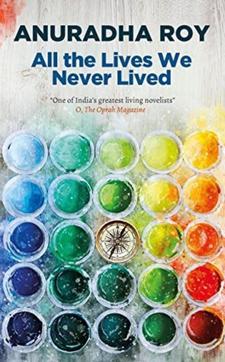
I was a judge this year for the Mumbai International Literature Festival’s Tata Lit Live Novel of the Year award. As a result, I read a phenomenal number of contemporary Indian novels in English. Anuradha Roy’s All The Lives We Never Lived was a deserving winner of the prize. Expansive yet intimate, it is an impressive addition to what is becoming a remarkable oeuvre. All The Lives… tackles the big themes: alienation and belonging; childhood and parenthood; love and longing; what it means to acquire a sense of one’s place at home, and in the world. Its precise, measured prose glitters. It is the best novel Roy has written so far.
Probably the finest novel I read this year was Julian Barnes’s The Only Story. When Barnes won the Man Booker Prize in 2011 for his novel, The Sense of an Ending, the judges called him “an unparalleled magus of the human heart”. In a career spanning more than four decades, Barnes has been a forensic examiner of the heart, and of love. Other than love, he has focused on death, dying, Englishness, and, more and more, memory, its slippery nature, and how it informs our impression of the past in the present.

All these tropes figure prominently in The Only Story. Taut and tense, it explodes in to life with its opening two sentences. The momentum never lets up. This story of love and loss is the most searing novel Barnes has ever written.
I reread Primo Levi’s Holocaust memoir, If This Is a Man, in 2018. I remembered it as a harrowing read; I had forgotten just how harrowing it is. Levi’s matter of fact account, shorn of anger and self pity, of the events inside a concentration camp, is illuminated by the lambent flame of his humanity. As when I had read it first, I had to pause for breath, and put the book away, before I could pick it up again. The sledgehammer impact of If This Is a Man makes it impossible to read in one sitting. But read it we must; it is one of the essential texts of the twentieth century.
SUKUMAR RANGANATHAN, EDITOR-IN-CHIEF

What’s the last thing you do before you sleep?
What’s the first thing you do when you wake up?
What do you do when you are on an elevator?
What do you do when you are walking down the road to the neighbourhood store, or from the subway station to your office/home?
If the answer to any of these questions is “see my phone” you must read Your Happiness was Hacked, by Vivek Wadhwa and Alex Salkever – even if you insist on doing so on your phone. It may not be the best book I read this year but it is definitely the most significant.
Technology, especially personal and home technology devices were supposed to make things easier, increase productivity, reduce the physical and mental stress of doing things or getting them done, and help people relax. In most cases, they’ve achieved the opposite. They distract. They are a drain on productivity. They eat into sleep (actually, they also eat into eat, if you get what I mean).
Then, there’s the insidious side – companies and governments misusing user data; privacy invasions; discrimination; filter bubbles; and the impact they have on children.
Written by Vivek Wadhwa, a columnist for this newspaper and one of the finest minds in technology and Alex Salkever, Your Happiness Was Hacked is among the first books, if not the first, on this issue. As it says in the foreword “… the founders and CEOs and many major technology companies limit use of these products by their children, even as they promote unrestricted use by everyone else…; the platforms talk about privacy but take every step imaginable to invade the privacy of their users; they talk about connecting people, but their products actually increase polarization, isolation, and loneliness.”
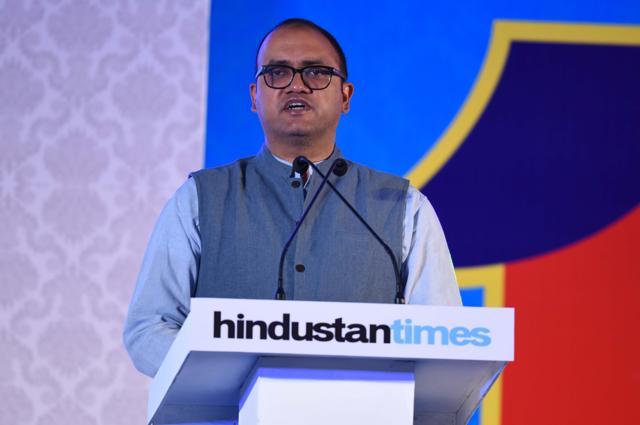
Does that sound familiar? It should; we’re all living it.
Wadhwa and Salkever are not modern-day Luddites; the first is one of the most respected commentators and thinkers in the technology sphere (and has also been a tech entrepreneur and academic) and the other is an author, speaker, consultant (and former C-level tech executive). As they admit: “neither of us hates technology; … we could not imagine what our lives would be like without the massive benefits technology has provided…”. Like most of us, they love Netflix, can’t live without e-mail, and appreciate the convenience of a digital map. Yet, it is difficult to turn a blind eye to the dark side of technology use, even dependency. It’s just that most people do not recognize this. “What none of us bargains for are the convenience’s hidden costs, increasingly compromising our day-to-day experience and our relationships.”
ZIA HAQ, ASSOCIATE EDITOR
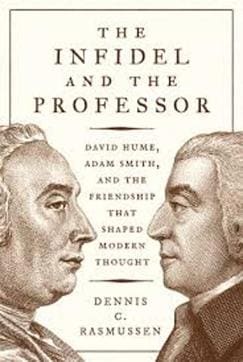
In the context of modernity, what readily comes to mind is the watershed French Revolution. It gave us the ideals of liberty, fraternity and equality in a concrete way. We somehow seem to not recall, as frequently, however, the Scottish Enlightenment. Scotland was as much the groundswell of modern ideas as France. The Scottish Enlightenment, a period spanning the 18th and early 19th centuries, had its own constellation of stars. But two of the brightest in that torrent of ideas flooding Little Scotland were David Hume and Adam Smith.
Today, you might say Hume was a philosopher and Smith the founding father of modern capitalism. But in Smith’s own lifetime, economics wasn’t a separate discipline but a part of moral philosophy. So, both Hume and Smith were pursuing, at least what was then taken to be, plain philosophy.
It is often said that Smith is “often quoted, but seldom read”. It’s just fashionable for free-market proponents to drop Smith’s name, just as it is fashionable for leftists to throw Marx at us. But it is only when we actually read their works that we can truly begin to understand them. Having read The Infidel and the Professor David Hume, Adam Smith, and the Friendship That Shaped Modern Thought by Dennis C Rasmussen, one feels it qualifies to be called an essential read.
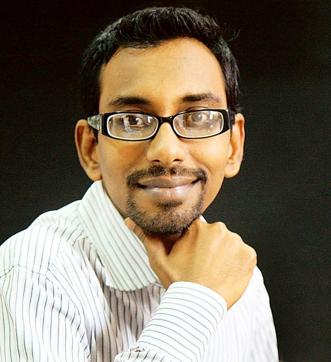
Hume was branded “the Great Infidel” for his “skeptical religious views”. Smith, by contrast, was a much-admired professor of moral philosophy at Glasgow University. The book traces their intimate friendship. Surprise: the book shows Smith, although considered a “conformist”, actually held “private religious views…closer to Hume’s”. The book also claims Hume “contributed more to economics” and Smith “contributed more to philosophy”. What are books for, if not to enlighten? Smith extolled free markets; they deliver the best outcome on their own, as if guided by an “invisible hand”. Modern economics however has always ignored Smith’s social tract. Traders, he said, are those “who have generally an interest to deceive and oppress the public”.



